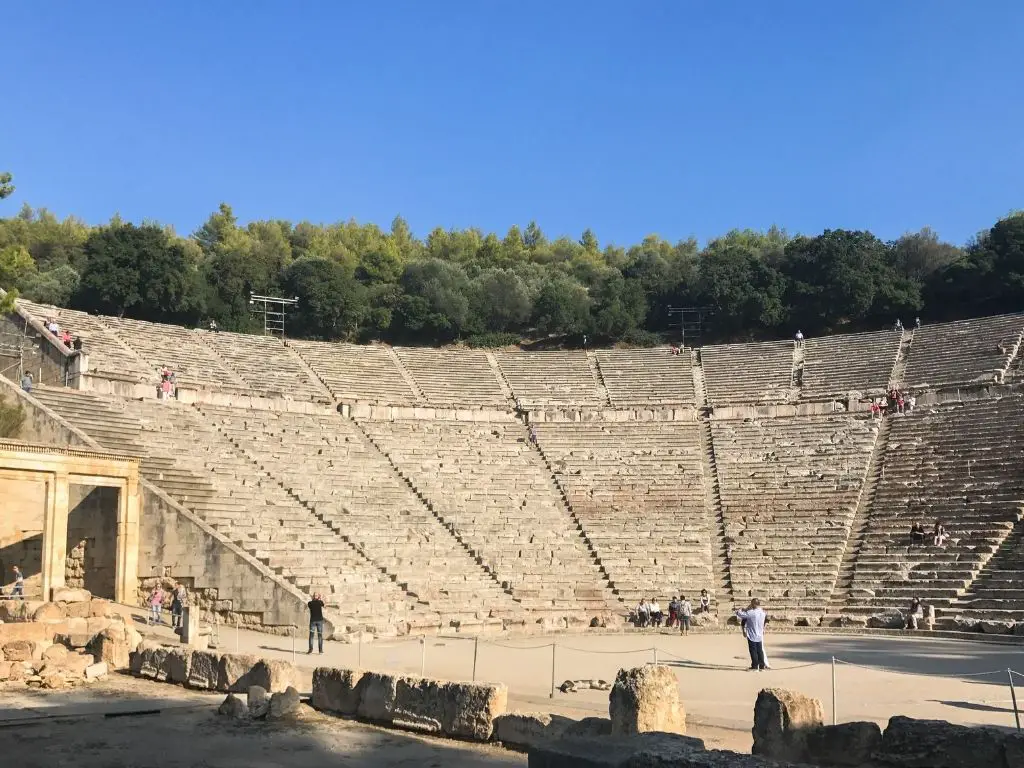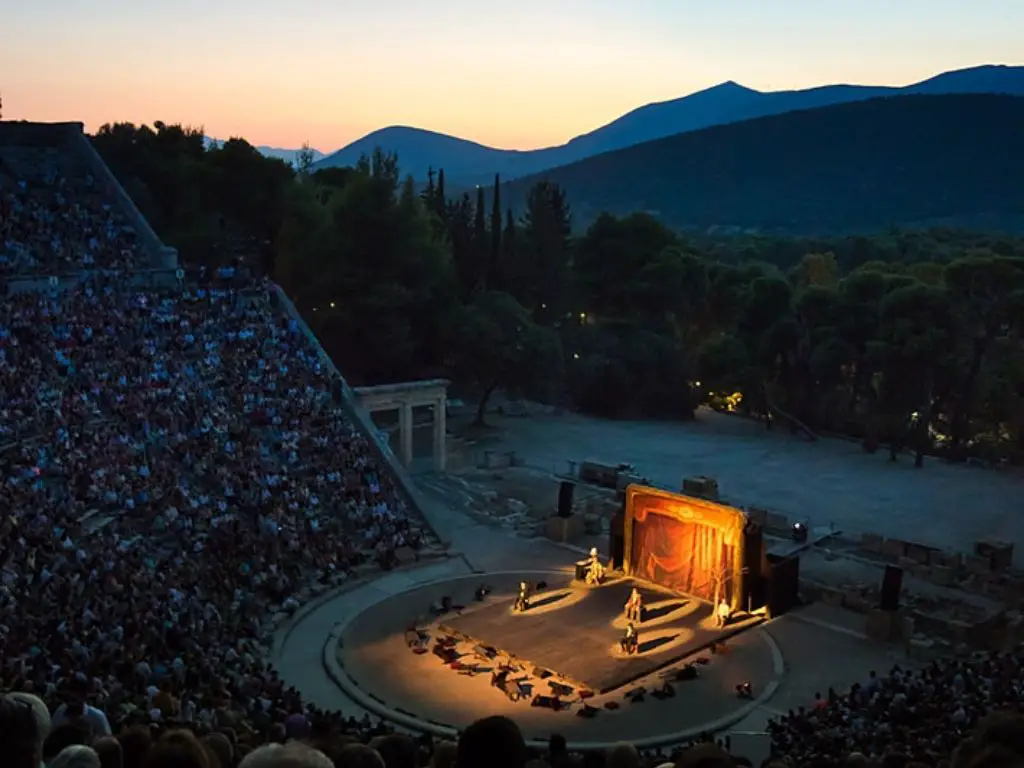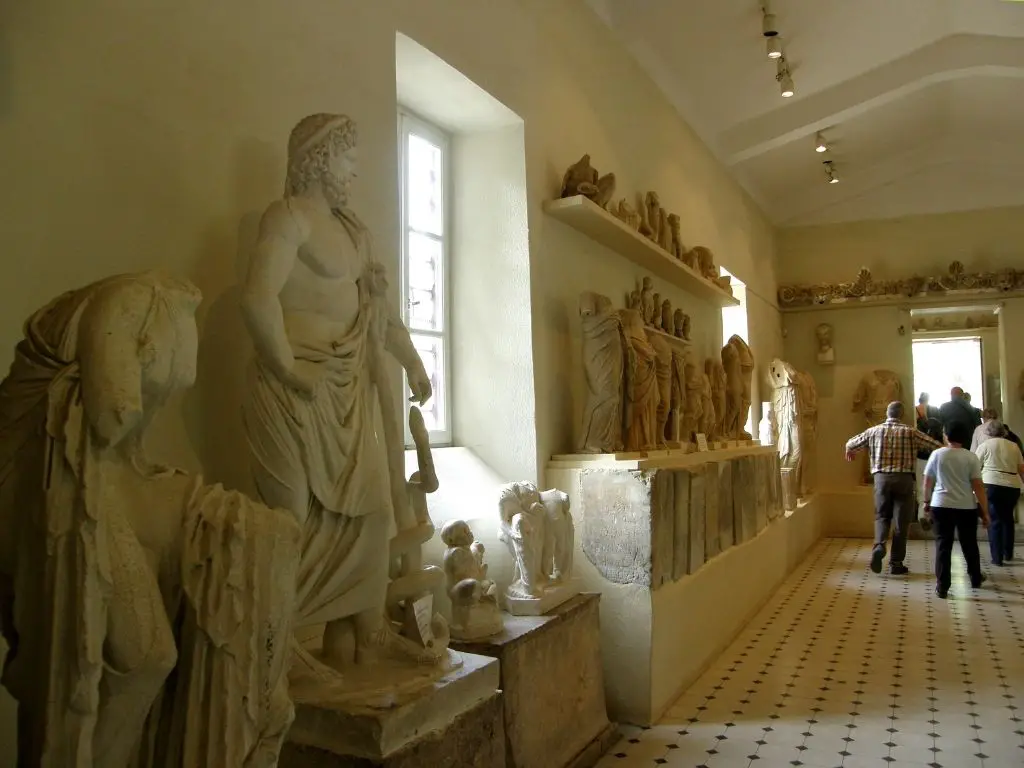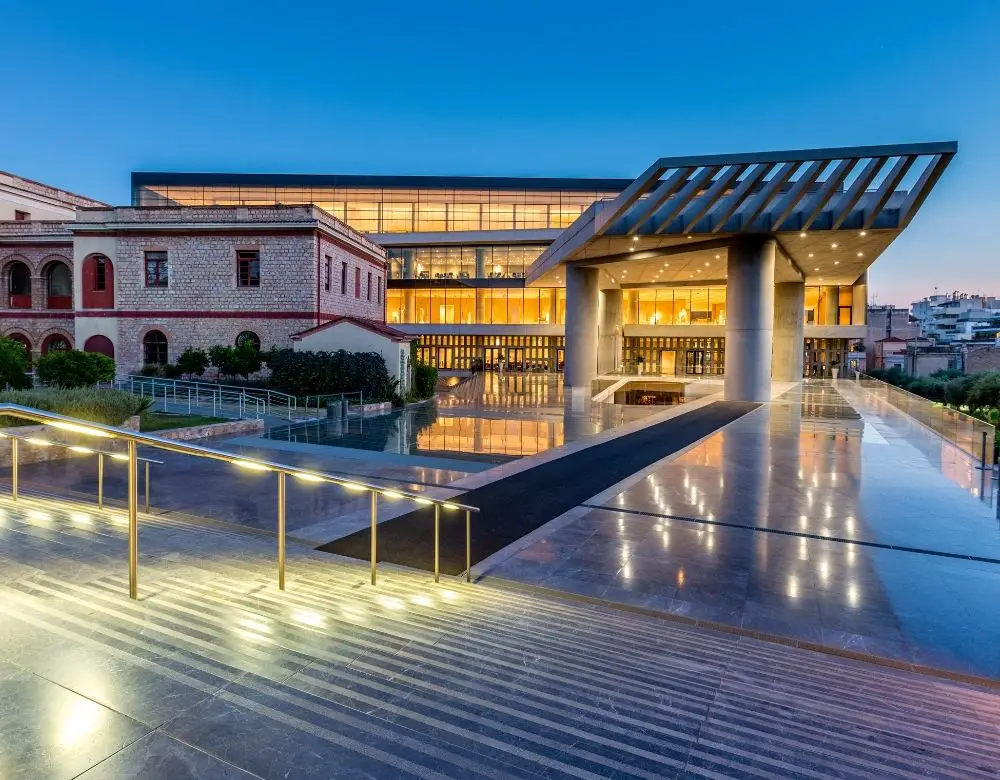



10 Fascinating Facts About The Epidaurus Ancient Theatre
In a valley amongst the mountains and lush greenery lies the most important theatre in Greece and beyond. The Epidaurus ancient theatre. Attracting thousands of visitors each year this spot on the Peloponnese is home to the Sanctuary of Asclepius (also spelt Asklepios). In antiquity, it was an important healing centre. But undeniably the main drawcard of the Sanctuary today is the theatre which is one of the most well preserved in the world.
The Sanctuary
The Epidaurus ancient theatre lies within the Sanctuary of Asclepius. Here you will also find the Temples of Artemis and Asklepios, the Tholos, the Enkoimeterion as well as the Propylaia. All provide an incredible insight into the past. But the theatre is undoubtedly the most impressive part of the Sanctuary.
History
The theatre was designed by the architect Polykletos the Younger in the late 4th century BC. It has become the defining part of the Sanctuary. So much so the site is now a UNESCO world heritage site. It consists of “buildings that represent all the functions of the Sanctuary, including healing cults and rituals, library, baths, sports, accommodation, hospital and theatre.”
The practices that were learnt and taught here were of significant value and were spread all across ancient Greece, hence why the Sanctuary of Asclepius is considered the ‘cradle of medicine.’




In Honour Of The Gods
In ancient Greece, almost everything was done in honour of the gods. So, while watching theatre was an enjoyable form of entertainment, it also had a purpose. The theatre served as a way to honour Asclepius. Asclepius, the son of Apollo, was the Greek god of healing and medicine and he is the reason why the ancient site is called the Sanctuary of Asclepius.
Incredible Acoustics
Rumour has it that the acoustics of the Epidaurus theatre are so good you can hear a pin drop from the back seats. While this might be a little exaggerated the acoustics of this ancient theatre have scientists in awe. The architectural design of the theatre means that when you are sitting down to watch a show, the actors have no need for microphones.
A scientific study revealed the seats of the theatre play a crucial role in the acoustics, “the seats, which constitute a corrugated surface, serve as an acoustic filter that passes sound coming from the stage at the expense of surrounding acoustic noise… Whether a coincidence or not, the theater of Epidaurus was built with optimized shape and dimensions.”




It Wasn’t Altered By The Romans
Perhaps as a credit to its amazing acoustics the Epidaurus ancient theatre was not altered by the Romans in later years. Many other Greek theatres over the country were altered and modified under Roman rule, but the Epidaurus theatre was not. Although eventually it was no longer used and fell into ruin being covered by earth, contributing to its preservation.
Excavation
The Epidaurus ancient theatre was discovered by the Greek archaeologist Panagiotis Kavvadias. In 1881 he received funding to undertake the excavation of a lifetime. What he and his team helped reveal on those slopes was the most well-preserved ancient theatres in history. Kavvadias later worked on the Acropolis excavation and was involved in founding the original Acropolis Museum.
Restoration
Restoration of the Epidaurus ancient theatre has continued ever since its excavation in 1881, especially in the 20th century. The most important being a diversion of rainwater around the theatre so that erosion does not affect its infrastructure. Many of the seats have been restored and reinforced as well as walls and gateways. This ensured that those who are interested in the fascinating history of this ancient site can still enjoy it today while on holiday in Greece.
It’s Still Used Today
It’s one thing to come and view ancient architecture in Greece, but to actually be able to use it as it once was used in ancient times is another thing entirely! Due to the fabulous acoustics and extensive restorations, the Epidaurus ancient theatre is still used today.
A trip to the Sanctuary of Asclepius at Epidaurus will take you about 2 hours from the capital. There are many incredible ancient cities to explore on the Peloponnese, so doing a road trip is the perfect way to see it all.




The Epidaurus Festival
The Athens and Epidaurus Festival is one of the largest in Greece and is held each year over the course of the summer. While some of the performances are held in the capital and many magnificent venues around the city, some are also held in Epidaurus and the ancient theatre. The festival has been running since 1955, making it the oldest performing arts festival in Europe.
From theatrical productions, musical performances and dance the festival fosters the Epidaurus ancient theatre’s rich past. This modern revival of arts draws in thousands of people from both Greece and the world. If you are holidaying in Greece at this time, you will not regret experiencing a taste of Greek culture in the oldest theatre on earth!
Visit The Museum
The Archaeological Museum of Epidaurus, while small, is the perfect addition to a visit to the Sanctuary and the Epidaurus ancient theatre. Located on-site, you can see a number of the artefacts that were excavated here, many by Kavvadias himself. There are ancient inscriptions, pottery, tools, as well as statues of Asclepius.










